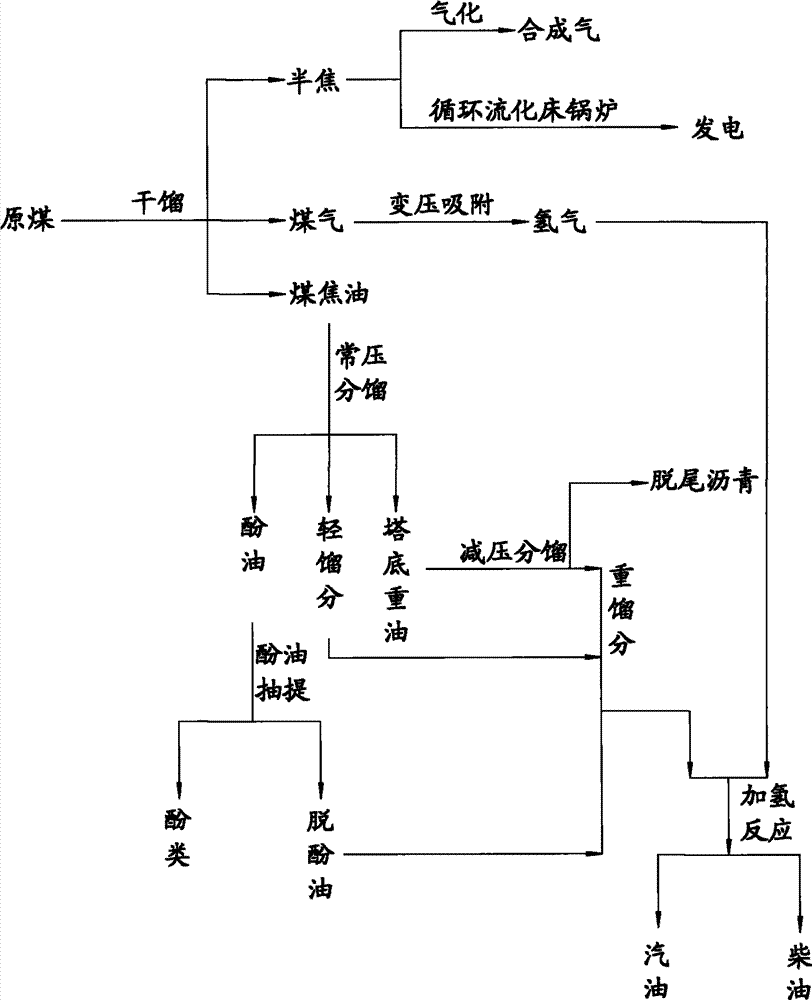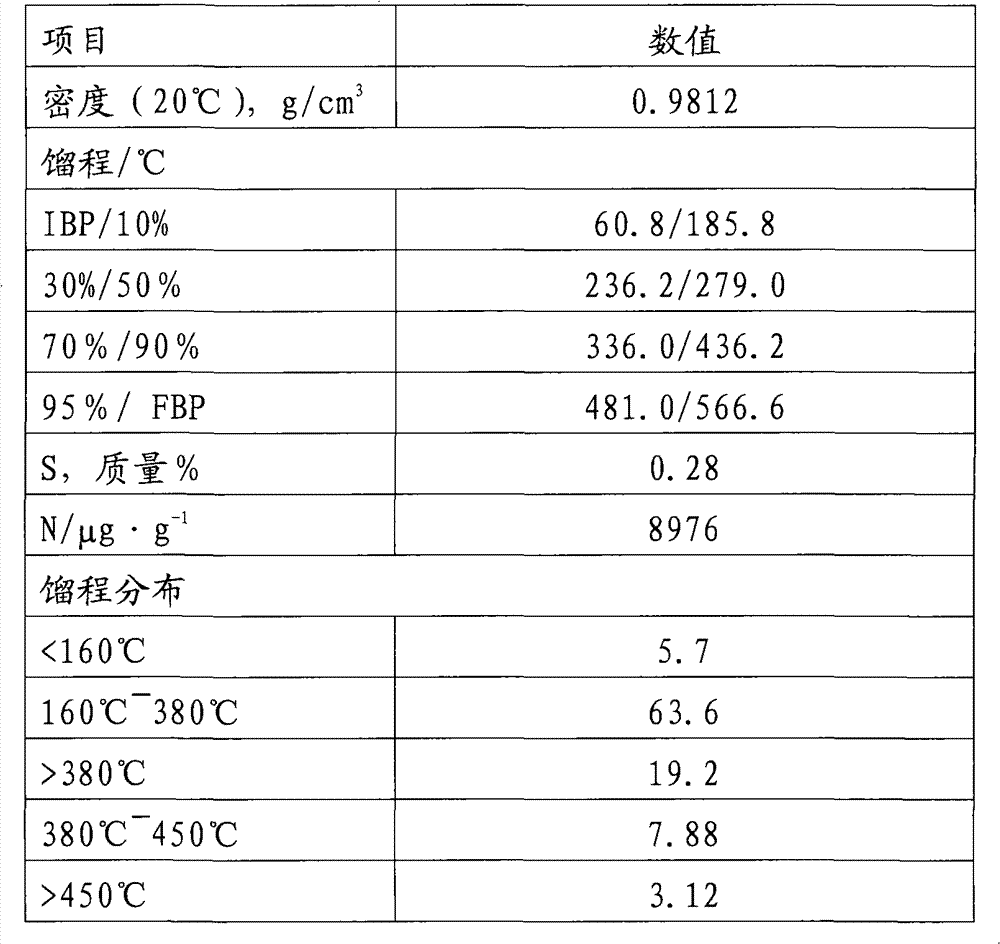Processing technology of non-caked coal or weakly caking coal
A technology of weakly caking coal and processing technology, applied in the field of coal chemical industry, can solve the problems of short service life of catalysts, and achieve the effects of thorough reaction, prolonging service life and improving utilization rate
- Summary
- Abstract
- Description
- Claims
- Application Information
AI Technical Summary
Problems solved by technology
Method used
Image
Examples
Embodiment 1
[0059] figure 1 It is the process flow chart of embodiment 1~3.
[0060] Nanning lignite is sent to a medium-low temperature fluidized bed carbonization reactor for carbonization reaction, the pressure is 0.1MPa, and the operating temperature is 500°C to generate carbonization gas, coal tar and semi-coke. The properties of carbonized coal tar are shown in Table 1. After the dry distillation gas is purified, it enters the PSA (Pressure Swing Adsorption) device, and passes through the adsorption bed layer made of zeolite molecular sieve. The reaction generates hydrogen, which together with the hydrogen produced by coal dry distillation, is used as feedstock for coal tar hydrocracking unit by using PSA technology. Dry distillation of semi-coke is sent to a fluidized bed gas generator, where it reacts with oxygen and water vapor to produce synthesis gas and coal ash. When the semi-coke is gasified, the semi-coke reacts with oxygen and water vapor (the volume ratio of water vapo...
Embodiment 2
[0062] The Yilan coal is sent to a medium-low temperature fluidized bed dry distillation reactor for dry distillation reaction, the pressure is 0.12MPa, and the operating temperature is 600°C to generate dry distillation gas, coal tar and semi-coke. The properties of carbonized coal tar are shown in Table 2. After the dry distillation gas is purified, it enters the PSA device, and the hydrogen gas is extracted through the adsorption bed layer composed of silica gel at an operating pressure of 2.45MPa, and the carbon monoxide component is also reacted with water to generate hydrogen gas by using medium-variation technology. , together with the hydrogen produced by coal dry distillation, the feedstock for the coal tar hydrogenation unit is proposed using PSA technology. The semi-coke is dry-distilled and sent to the CFB unit for power generation. The dry distillation coal tar enters the atmospheric fractionation tower after the pretreatment unit, and fractionates the tower top ...
Embodiment 3
[0064] The Yilan lignite is sent to a medium-low temperature fluidized bed carbonization reactor for carbonization reaction, the pressure is 0.18MPa, and the operating temperature is 650°C to generate carbonization gas, coal tar and semi-coke. The properties of carbonized coal tar are shown in Table 3. After the dry distillation gas is purified, it enters the PSA (Pressure Swing Adsorption) device 4, and passes through the adsorption bed layer composed of CO special adsorbent, with an operating pressure of 1.2 MPa, to extract the hydrogen therein for the feed of the coal tar hydrogenation device. Dry distillation of semi-coke is sent to a fluidized bed gas generator, where it reacts with oxygen and water vapor to produce synthesis gas and coal ash. When the semi-coke is gasified, the semi-coke reacts with oxygen and water vapor (the volume ratio of water vapor and oxygen is 5:1) to produce synthesis gas (carbon monoxide and hydrogen) and coal ash; the reaction pressure of the ...
PUM
 Login to View More
Login to View More Abstract
Description
Claims
Application Information
 Login to View More
Login to View More - R&D
- Intellectual Property
- Life Sciences
- Materials
- Tech Scout
- Unparalleled Data Quality
- Higher Quality Content
- 60% Fewer Hallucinations
Browse by: Latest US Patents, China's latest patents, Technical Efficacy Thesaurus, Application Domain, Technology Topic, Popular Technical Reports.
© 2025 PatSnap. All rights reserved.Legal|Privacy policy|Modern Slavery Act Transparency Statement|Sitemap|About US| Contact US: help@patsnap.com



